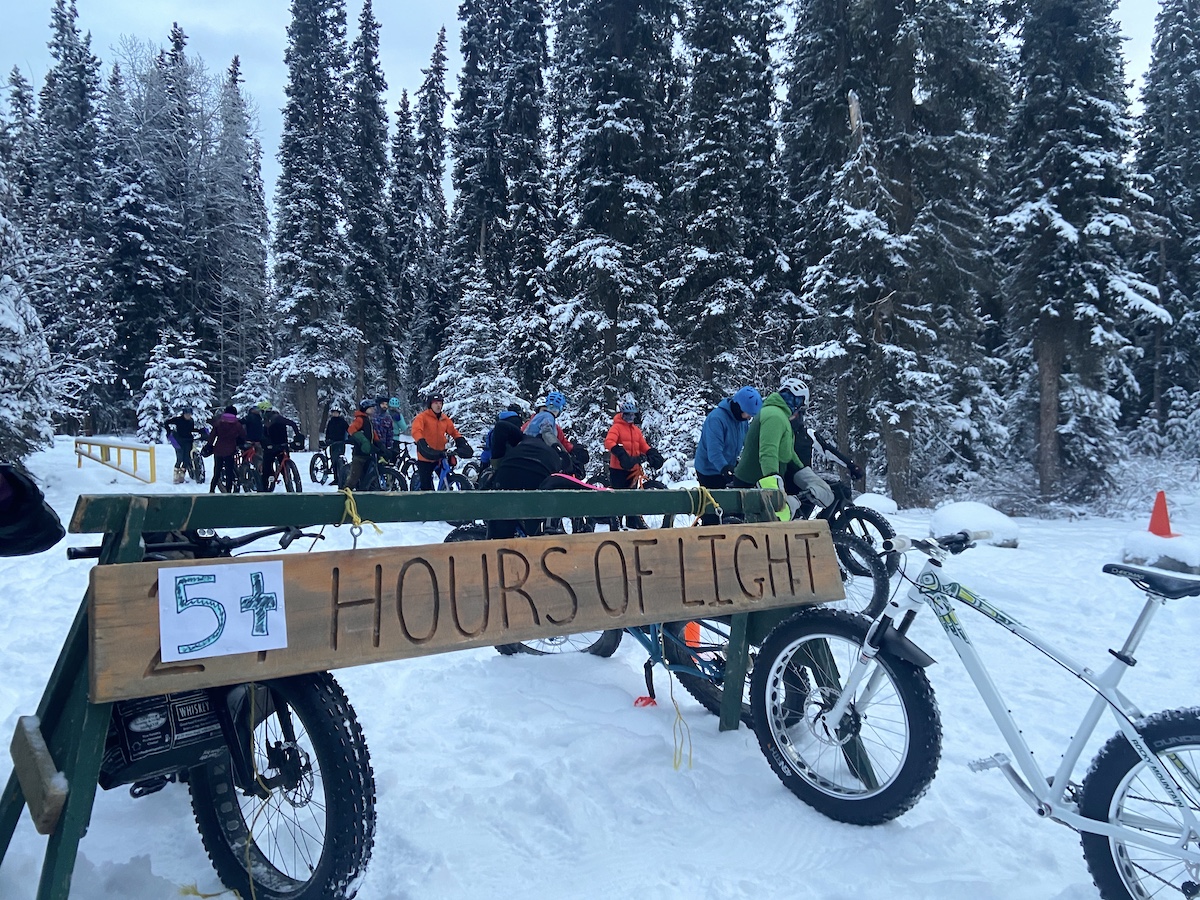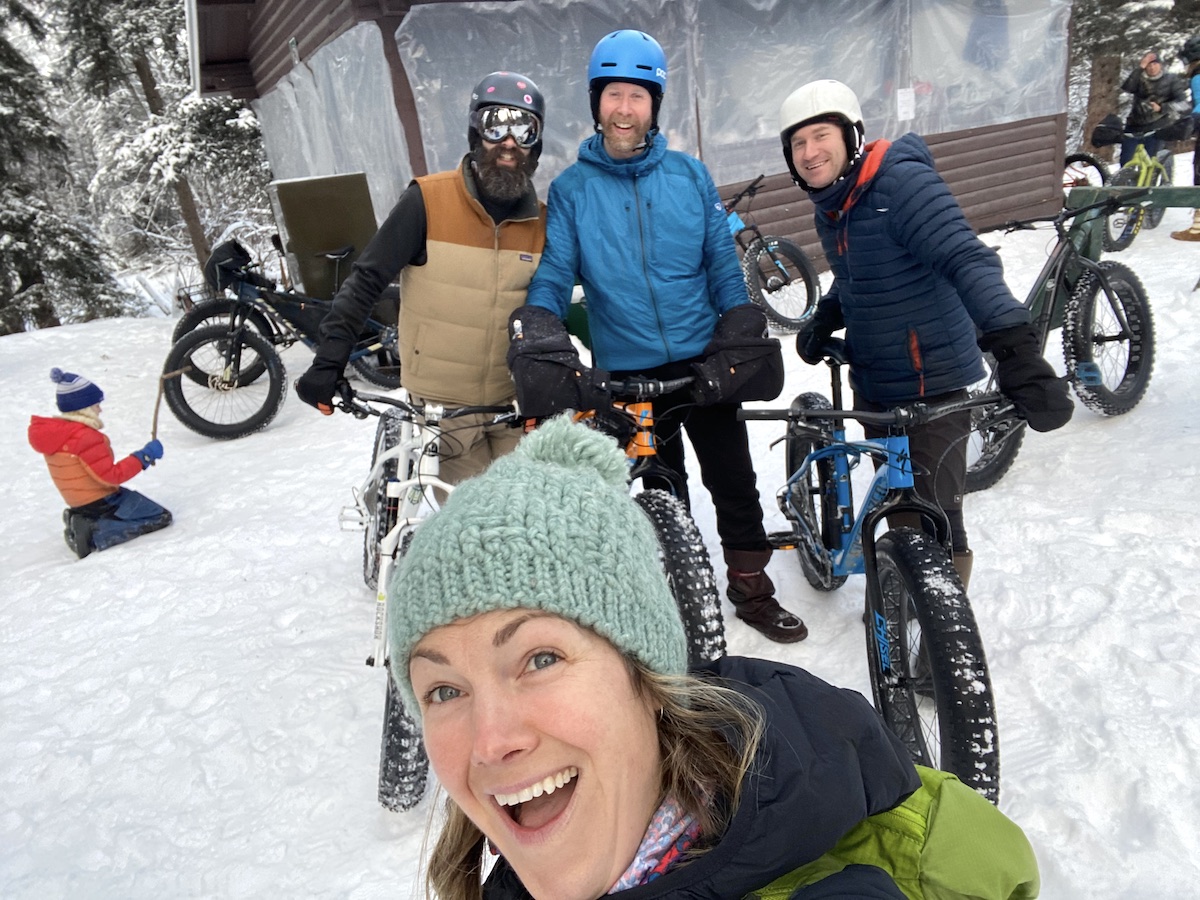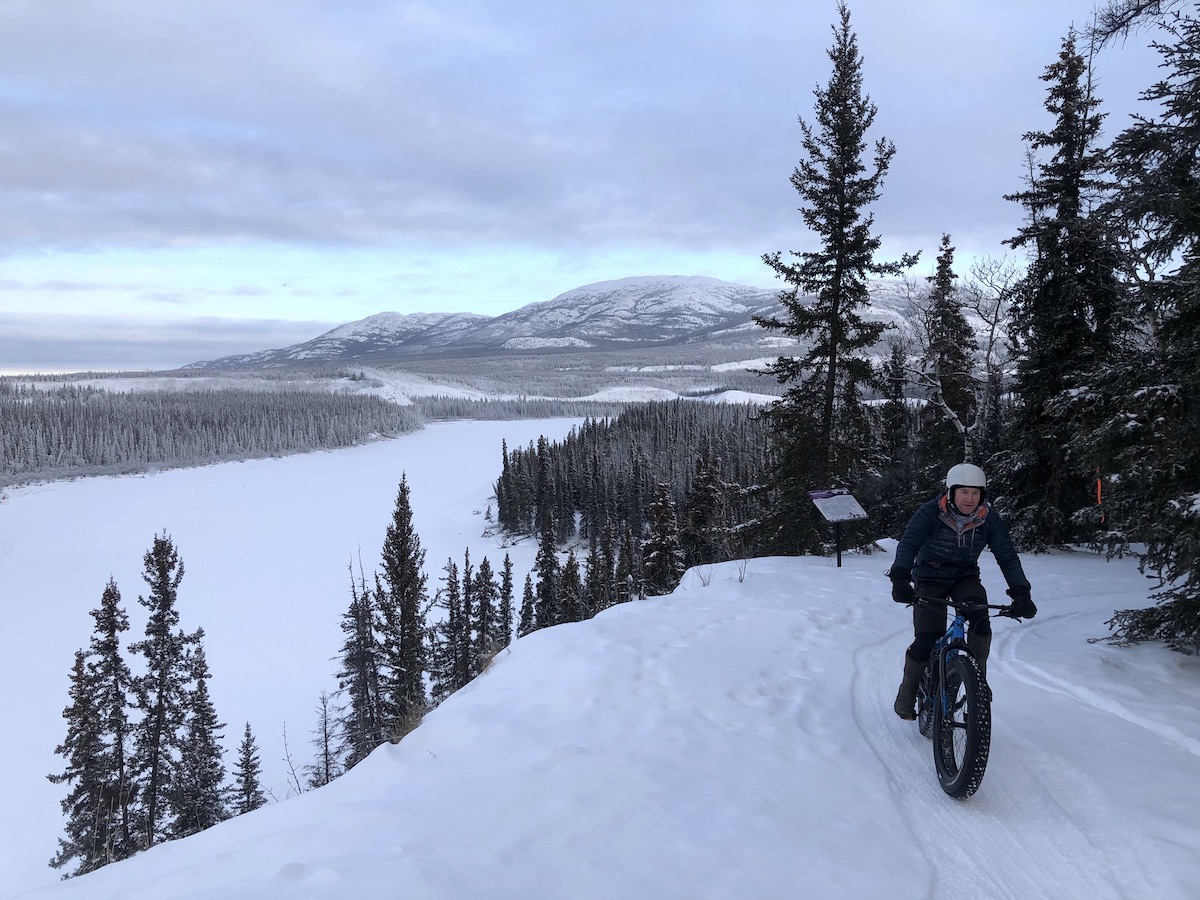5+ Hours of Light fat bike festival
Known as the land of the Midnight Sun, Yukon offers two very different outdoor experiences in summer and winter. During the summer, typically around June 21 the sun never really goes down. There’s dusk around 3 a.m. but even in the forest you don’t need lights to see.
The opposite takes effect in winter, where our light is very limited. December 21 usually hosts winter solstice. During this period, we receive just over five hours of light before it’s too dark to go without lights. The sun rises at 10 a.m. and sets around 3:45 p.m.
Whitehorse, Yukon has a very active endurance sport community. At winter solstice, many people get out and celebrate the longest night of the year through sport. There’s a running event as well as a fat bike event. The latter is known as the 5+ Hours of Light.

In previous years, I’ve not been able to participate in the 5+ Hours of Light but this time our family’s schedule made it possible. Together with three friends (and 74 other cyclists) I rode my fat bike around the singletrack of Wolf Creek campground as a celebration of winter solstice.

Most of my fat bike riding consists of commuting to and from work. That said, I occasionally get out on trail rides, and I’ve ridden the Wolf Creek loop a number of times. It’s very twisty, winding and a whole lot of fun. There’s not much space for passing, as it’s almost all singletrack.
I’ve been riding bikes in the Yukon for over 20 years. I used to know most everyone who would show up to an event like this, but at the 5+ Hours of Light I only recognized a few faces. There were likely more, but it's hard to tell when everyone is bundled up. Still, it’s always nice to meet new people and simply be out together on bikes, sharing the solstice experience.
The event’s weather wasn’t too cold – just -18 C at the start – but next time I will be better prepared.
Something I learned is that I should bring several pairs of gloves. After three laps of the 9 km course, my gloves were soaked and starting to freeze from sweat. Thankfully, I use 45Nrth Cobrafist pogies, but at the beginning of every lap my hands were icy and it would take a few kilometres to warm up.
Next time, I’d also bring more clothes options including an extra set of base layers. A friend gave me a pair of toe warmers which kept my feet nice and toasty.

I’d like to do more fat bike racing. We have a couple of low-key local fat bike events put on each season (hooray for amazing volunteers) compared to the many more that cyclists in larger cities can participate in. There are some long-distance events I could race in such as the White Mountains 100 in Alaska or Yukon Arctic Ultra and several others.
After this experience, I’ve realized I would need to do a lot of training, testing and preparation before I can be part of longer events. I completed a measly 27 km (3 laps) and could have done a couple more, but that would have been it. The top finishers rode eight laps.
Also, simply because I can ride 170 km on the road in April does not mean I can ride 170 km on my fat bike in winter. Fat bike racing takes a higher level of planning, toughness to build and skills to gain.
Thanks to Contagious Mountain Bike Club for putting on the 5+ Hours of Light.
Happy winter solstice!